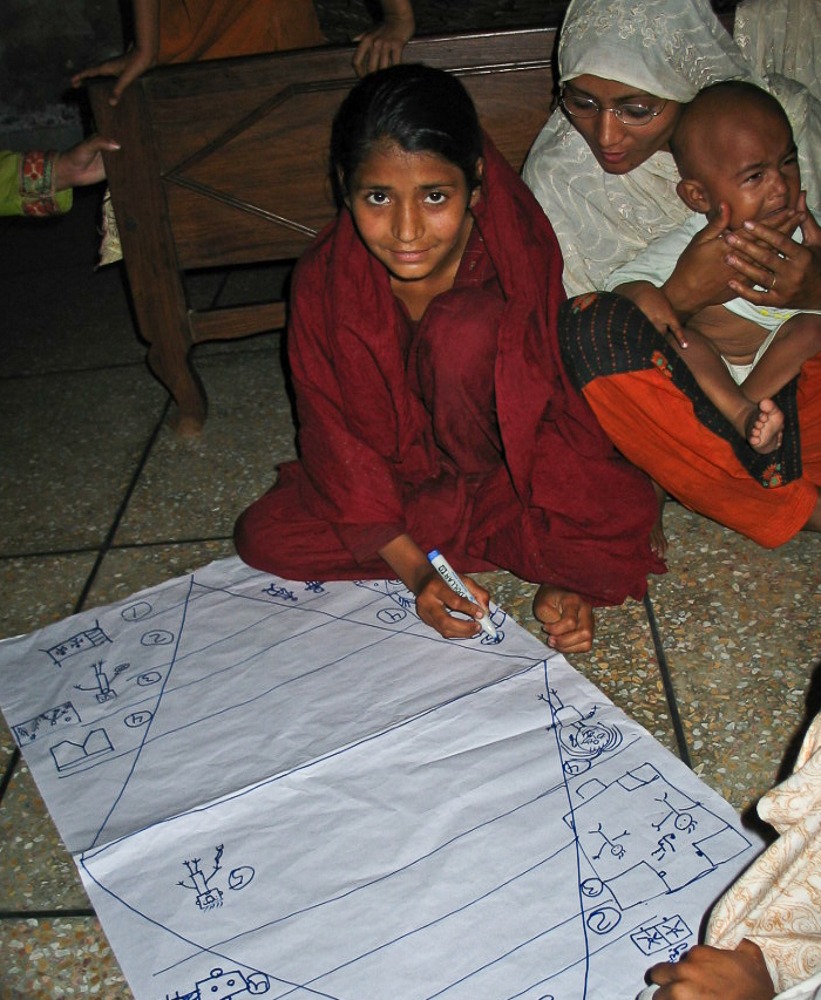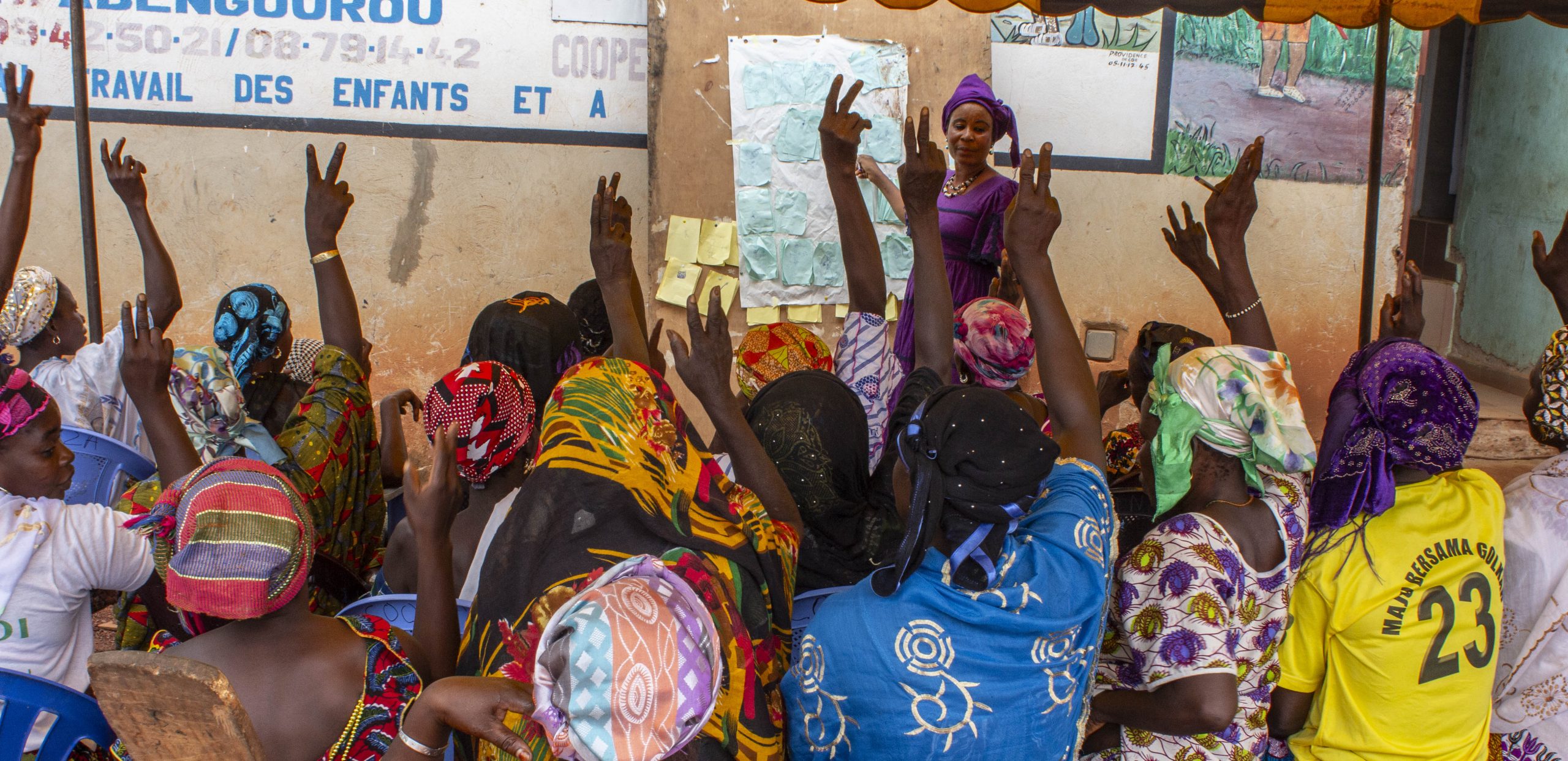Diamond Visions are participatory frameworks to examine sensitive, complex and/or potentially conflictual issues.
Diamond Visions develop a hierarchy of locally relevant indicators of change and identify differences in perceptions and indicators between stakeholders.
‘Win-win’ Diamonds bring stakeholders together to negotiate consensus for equitable solutions around common ‘human values’ and agree which issues to leave for further consideration later.
Diamond visions are shining and very valuable. They inspire us to dream of a bright and prosperous future. Every Vision Diamond is also unique and with many faces, all of which reflect light and combine to form the whole.
But mining the rough diamonds from the depths of the earth is very hard work and takes skill and determination to succeed. It takes even more hard work, skill and determination to make them shine.
We need to keep the inspiring vision before us, even when life is tough. Once Diamond Visions shine, they last forever and are very hard to break.






Diamond vision:
diagram dna
What Are Diamond Visions?
Diamond Visions are participatory frameworks that use a Diamond shape with horizonal and vertical divisions to examine sensitive, complex and potentially conflictual issues. Vision Diamonds:
- identify elements of a vision – what is good and what is bad
- rank these elements as hierarchy of priorities
- facilitate consensus between on common values stakeholders
- clarify dimensions of difference for stakeholders to negotiate
- provide indicators with baseline to quantify achievements and things still to achieve
- provide the basis for multi-stakeholder negotiation on next ways forward.
However Diamonds are the most complex of the GAMEChange tools to facilitate. They take time, particularly if dealing with sensitive issues. If time is very short and/or strong participatory facilitation skills do not exist, then use alternative visioning and assessment methods like simple Vision Drawing or Soulmate Visioning.
What do we use Diamond Visions for?
- Visioning and identifying change indicators: Diamond Visions establish locally relevant SMART indicators (eg gender justice and CEDAW diamonds, poverty diamonds, leadership diamonds)
- Family, group and multi-stakeholder negotiation: Diamond Visions clarify and analyse the extent and patterns of consensus or difference within families, communities and/or groups in visions and indicators
- Establish locally-relevant priorities for change and set targets Diamond Visions facilitate participatory negotiation of mutually beneficial ‘win-win’ change contracts (win-win diamonds, leader/member group norms)
- Rapid participatory impact assessment Diamond Visions offer a more inspiring, rigorous and empowering methodology for Focus Group Discussions
Diamond VisionTool Examples
- Poverty Diamonds: establish women and men’s indicators for poverty targeting.
- Empowerment Diamonds: establishes criteria of most empowered and least empowered for different stakeholders.
- Gender Justice and CEDAW Diamonds to identify detailed indicators for gender justice and reach consensus between women and men as part of a GALS Participatory Gender Review.
- Happy Family Diamonds: establishes criteria for women, men and youth in Happy and Unhappy Families as more ‘men-friendly’ alternative to Gender Diamonds)
- Violence Diamonds: establishes a hierarchy of different types of psychological and physical abuse suffered by women, children and men to establish non-violent modes of conduct. Used in ANANDI, India.
- Food Security Diamonds: look at the types of food women and men have in the most food secure and insecure households in relation to the foods they most value.
- Leadership Diamonds: looks at criteria for good leaders and good members to establish agreed common codes.
- Decent Work Diamonds: looks at employee and employer criteria for Decent Work and establishing an agreed Code of Conduct.
- Friendship Diamonds: a personal Diamond Tool used between two people to improve their relationship through bringing together what each person likes/dislikes about themselves and what they like/dislike about the other person.
Diamond Framework
Diamond shape 1 for group: four horizontal ranking lines
Diamond shape 2 for stakeholder plenary: horizontal ranking lines and three vertical stakeholder lines
Best/Worst indicators
Individual brainstorm of best/ worst/ good/ bad indicators.
Ranking and prioritisation
Action priorities are ringed.
Tracking over time.
Plenary Consensus Diamond
Cards are taken from the group diamond and placed on the plenary diamond: placing them to one side only if they are relevant for only one stakeholder or in the middle if they are common indicators.
Tracking over time.

toolkit facilitation examples



-

iLEAD Tanzania 5: Leadership Diamond
iLEAD Tanzania Tool 5 Leadership Diamond is a fun process to start discussion of 6 characteristics of 1) good leaders 2) bad leaders 3)good members 4) bad members through role reversal plays and ranking and voting on a Leadership Diamond.
-

EAV 2: Freedom from Violence Diamond
The Freedom from Violence Diamond places Gender-Based Violence within the wider context of human rights of women/girls and men/boys and what freedom from violence means for them. It then identifies different types of violence affecting women and men in families and communities and priorities for change.

